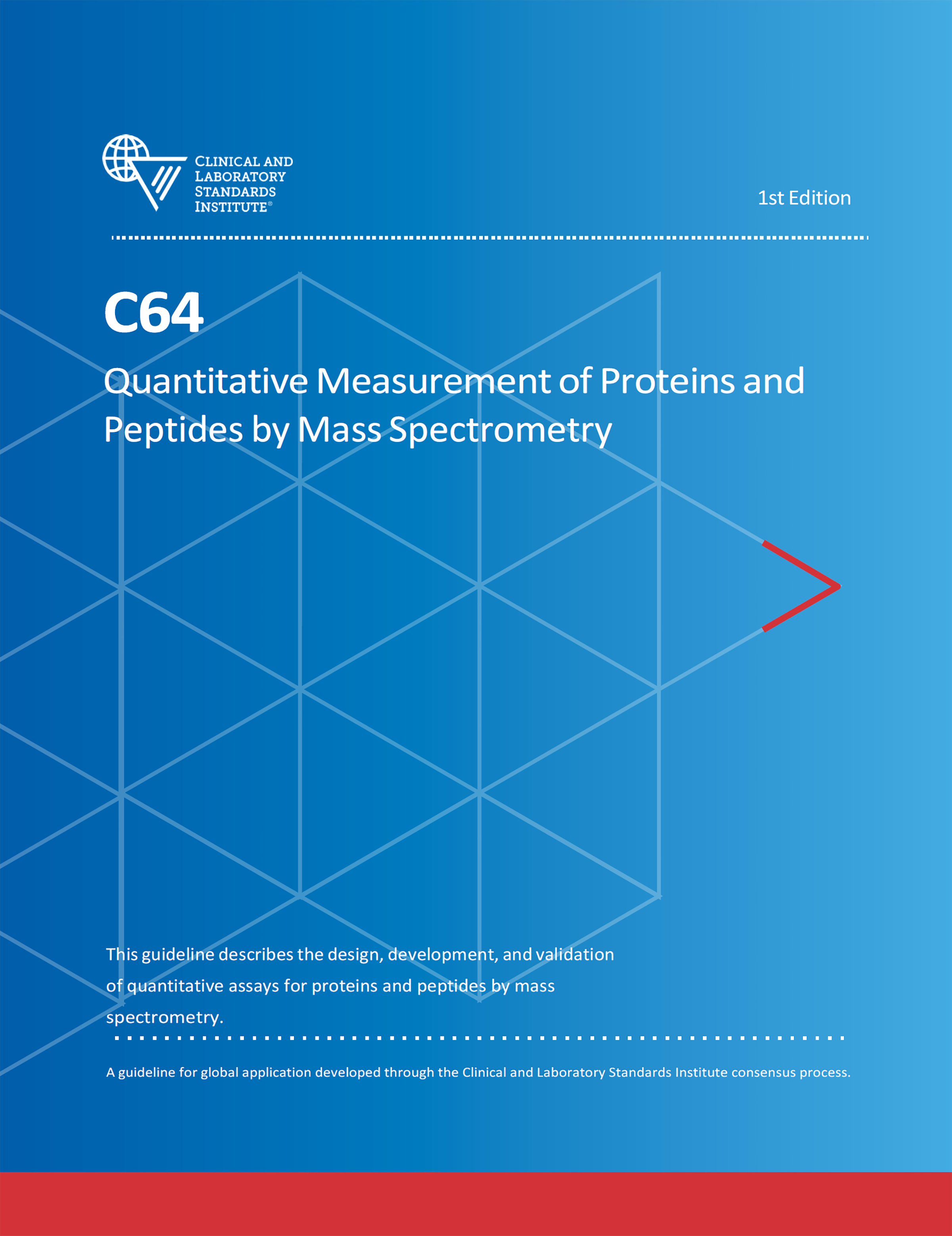Protein/Peptide mass spectrometry (MS) is an enabling technology that is ideally suited for precision diagnostics, due to its quantitative measurements that can be multiplexed and its ability to directly identify proteoforms. As a result, interest on the widespread implementation of quantitative protein MS tests transitioning into medical laboratories is growing. However, this adoption in medical laboratories faces hurdles, such as consensus guidelines and requirements that ensure accurate measurements. It is of key importance to follow the same established guidelines and requirements for all tests within medical laboratories.
Educational efforts play an important, if not pivotal, role in the establishment of any novel technology. Many regulatory agencies adopt the standards and guidelines published by the Clinical and Laboratory Standards Institute (CLSI) when setting regulatory guidelines for clinical laboratories. The earliest guidance for evaluation of liquid chromatography (LC) MS-based methods focused on small molecules. More specific consensus-based MS requirements have been available since the publication of guideline C50-A from CLSI in 2007, which was later revised into a more systematic approach for development and validation of LC–MS methods in the CLSI C62, a guideline titled “Liquid Chromatography-Mass Spectrometry.”  This document, approved in 2014, more or less replaced the pioneering document C50-A, and is a valuable starting point to reliably establish LC-MS as a laboratory-developed test (LDT) in a diagnostic laboratory.
This document, approved in 2014, more or less replaced the pioneering document C50-A, and is a valuable starting point to reliably establish LC-MS as a laboratory-developed test (LDT) in a diagnostic laboratory.
As such, medical laboratorians around the world and the FDA, rely on CLSI guidance consensus documents to support high quality, efficient, and safe laboratory testing. For the proteomics field (research centered on peptide and protein measurements) to move into medical laboratories, analytical mass spectrometry-based standards must be raised to meet those of the clinical laboratory community.
In 2018, CPTAC investigators teamed up with other volunteers from the research and clinical laboratory community (academia, regulatory, and industry) to begin developing CLSI C64, a guideline titled “Quantitative Measurement of Proteins and Peptides by Mass Spectrometry.” This just released guideline provides a framework for the design, development, and validation of quantitative clinical protein and peptide assays by mass spectrometry.
“As a researcher committed to applying the best laboratory practices to development of targeted proteomics assays, it was a pleasure to participate in the C64 document development effort and I am grateful for the hard work of the development committee. The C64 document will advance practices aimed at improving the rigor of quantitative mass spectrometry-based protein tests, aiding the clinical translation of this important technology,” said co-author Jeffrey Whiteaker Ph.D., Director of Proteomics in the laboratory of Dr. Amanda Paulovich at the Fred Hutchinson Cancer Research Center.
This guideline is intended for those who have experience with traditional small-molecule liquid chromatography–mass spectrometry (LC-MS) but not with protein and peptide analysis. To enhance translation of assays to clinical use, this guideline focuses on method development aligned with clinically appropriate analytical validation. As such, development of this document is important as C64 is intended to be a resource for instrument manufacturers, manufacturers of LC-MS reagents, regulatory agencies, researchers and educators, as well as individuals responsible for developing laboratory standards and policy. Furthermore, the clinical laboratory makes broad use of CLSI guidelines as a helpful starting place for clinical implementation once initial FDA approval has been obtained. By using CLSI standards, laboratorians can improve process quality, decrease the time to develop standard operating procedures and implement safer practices with greater ease and efficiency.

